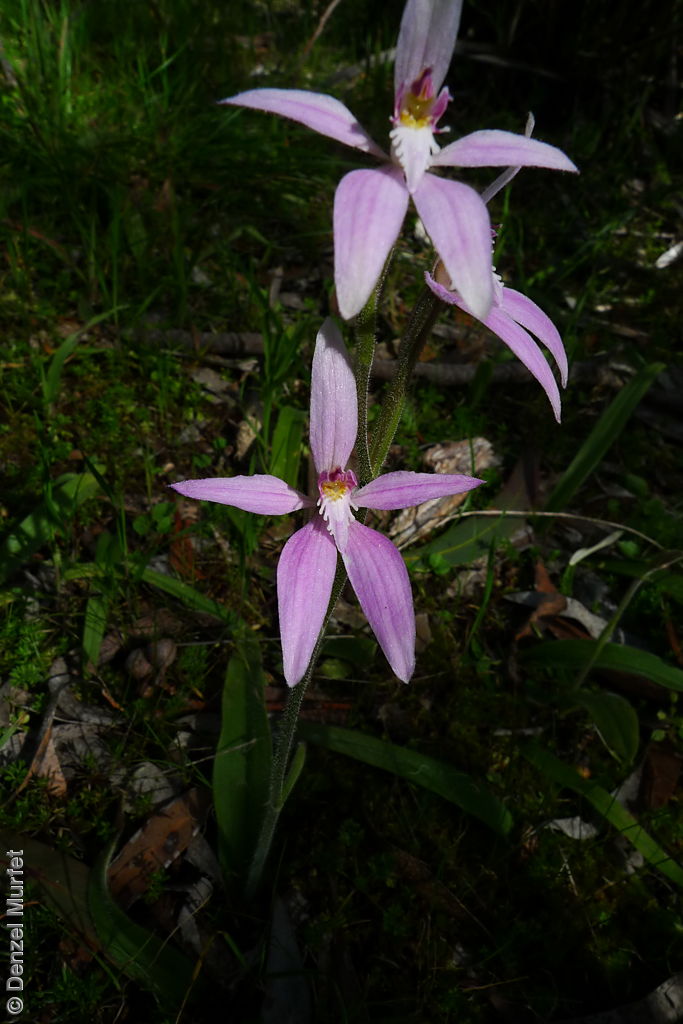
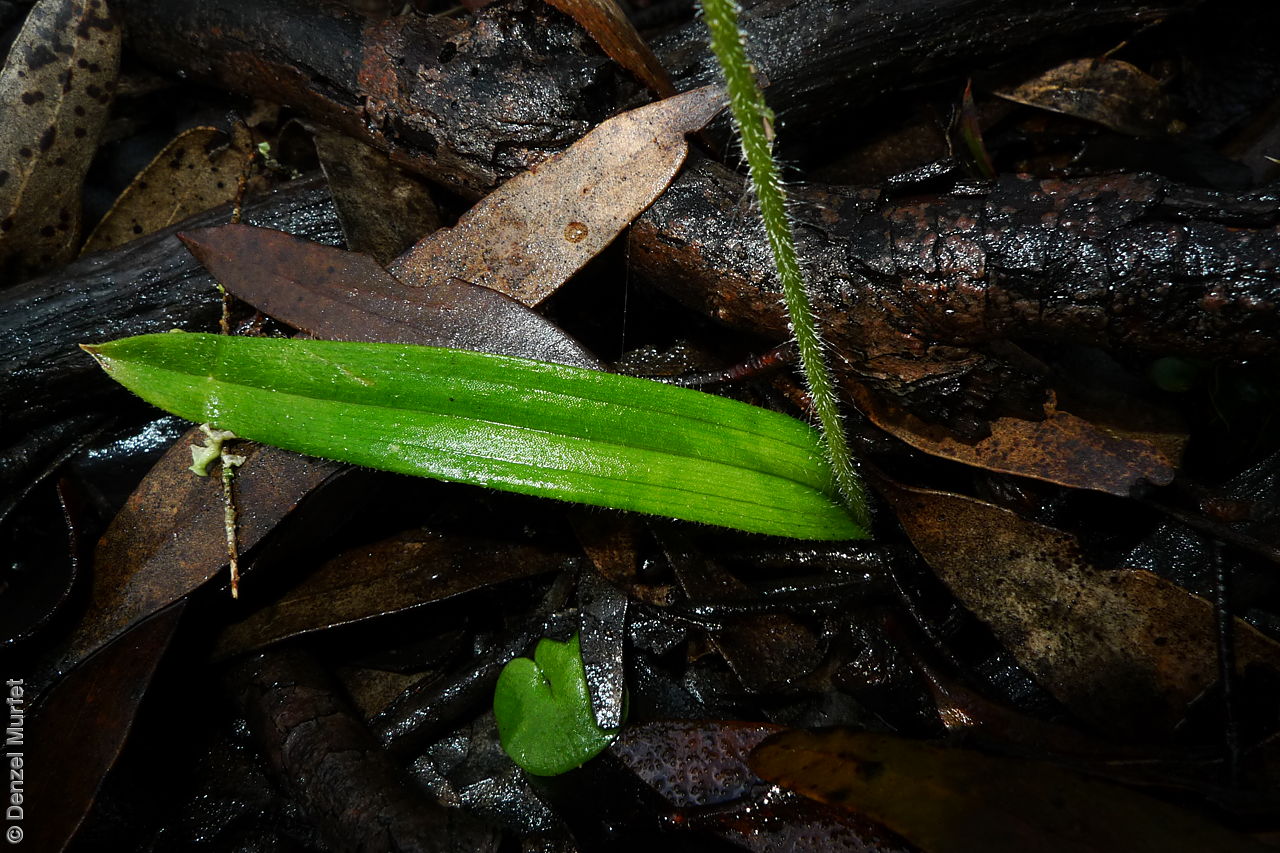
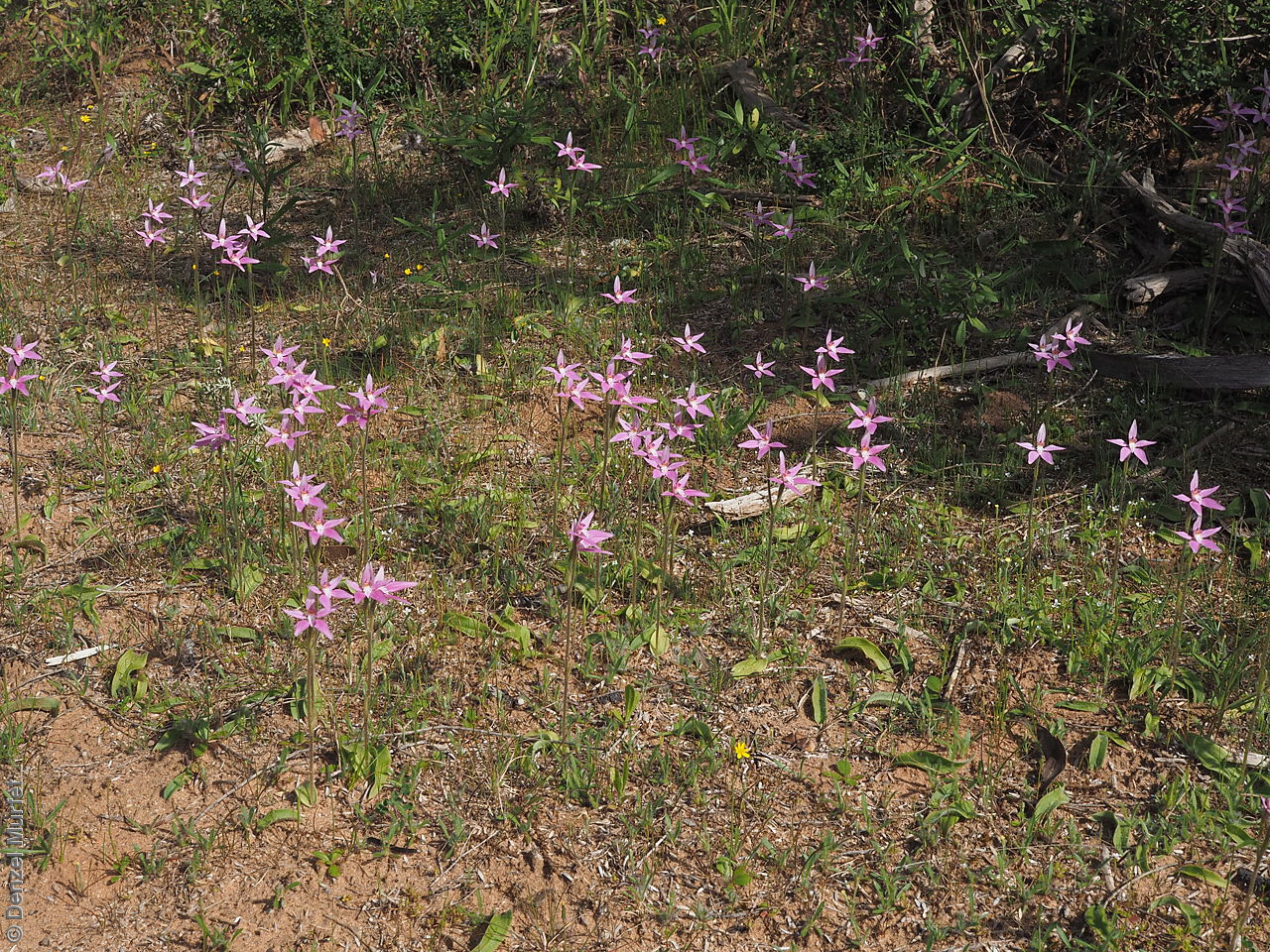

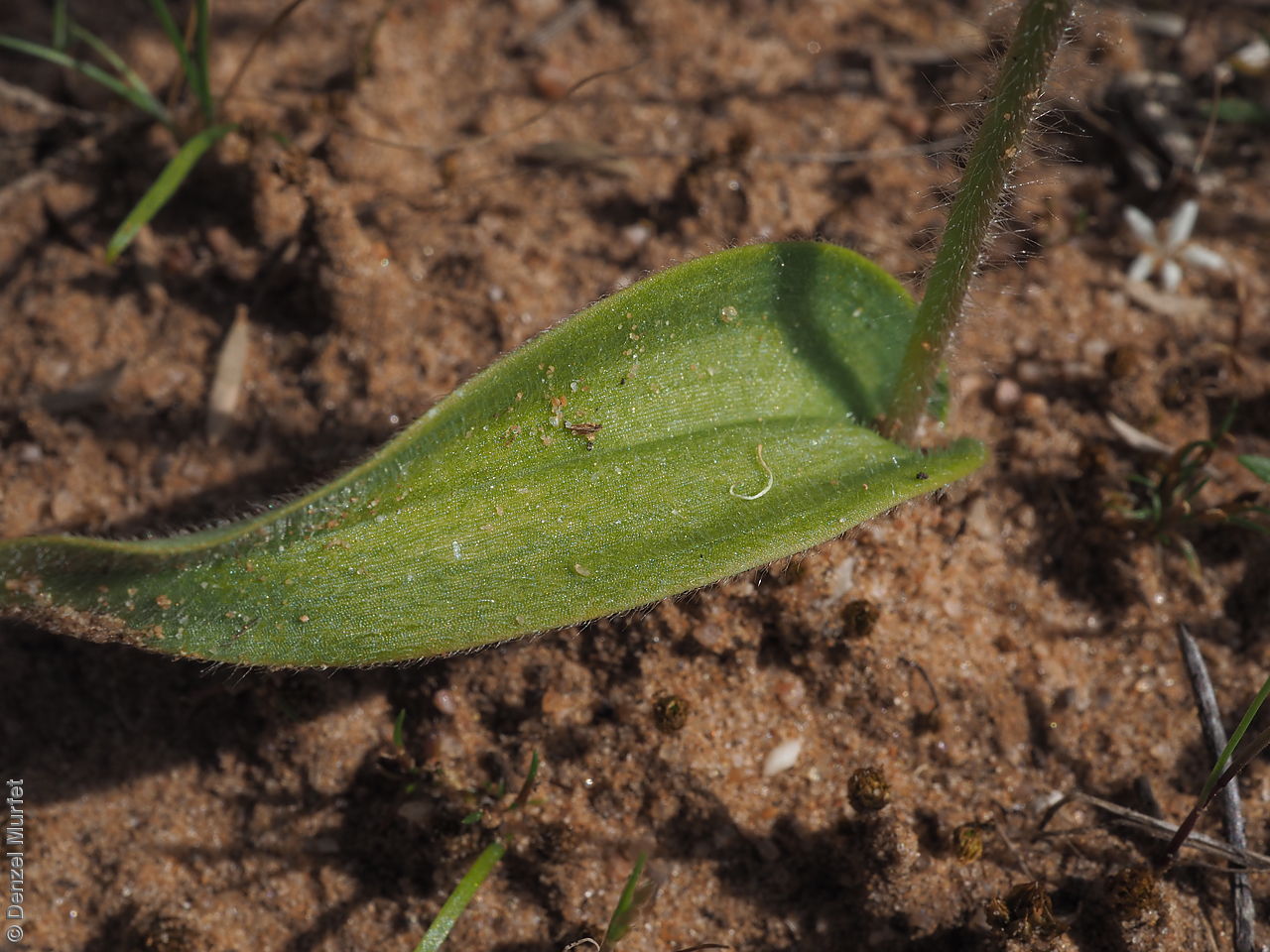
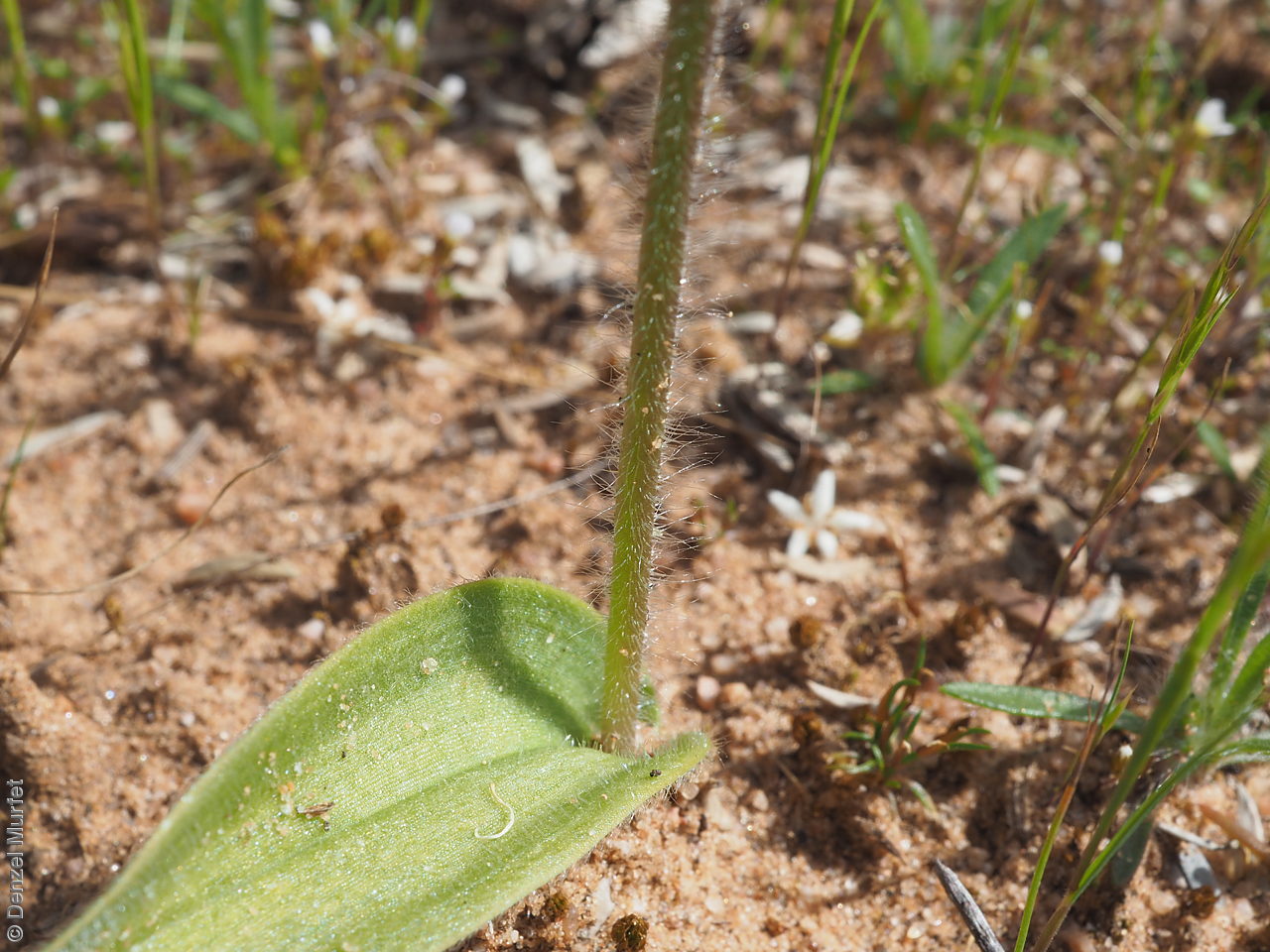
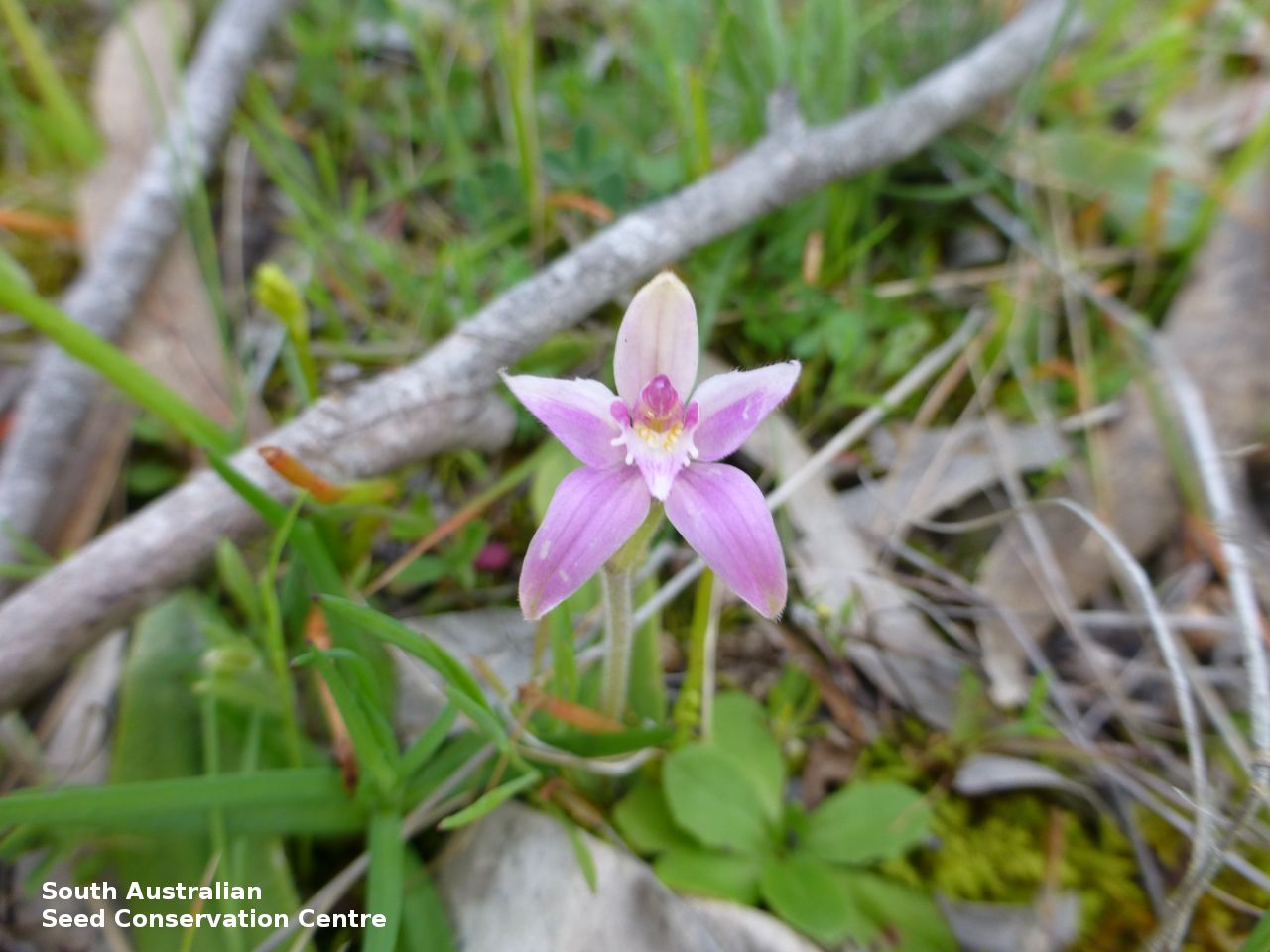
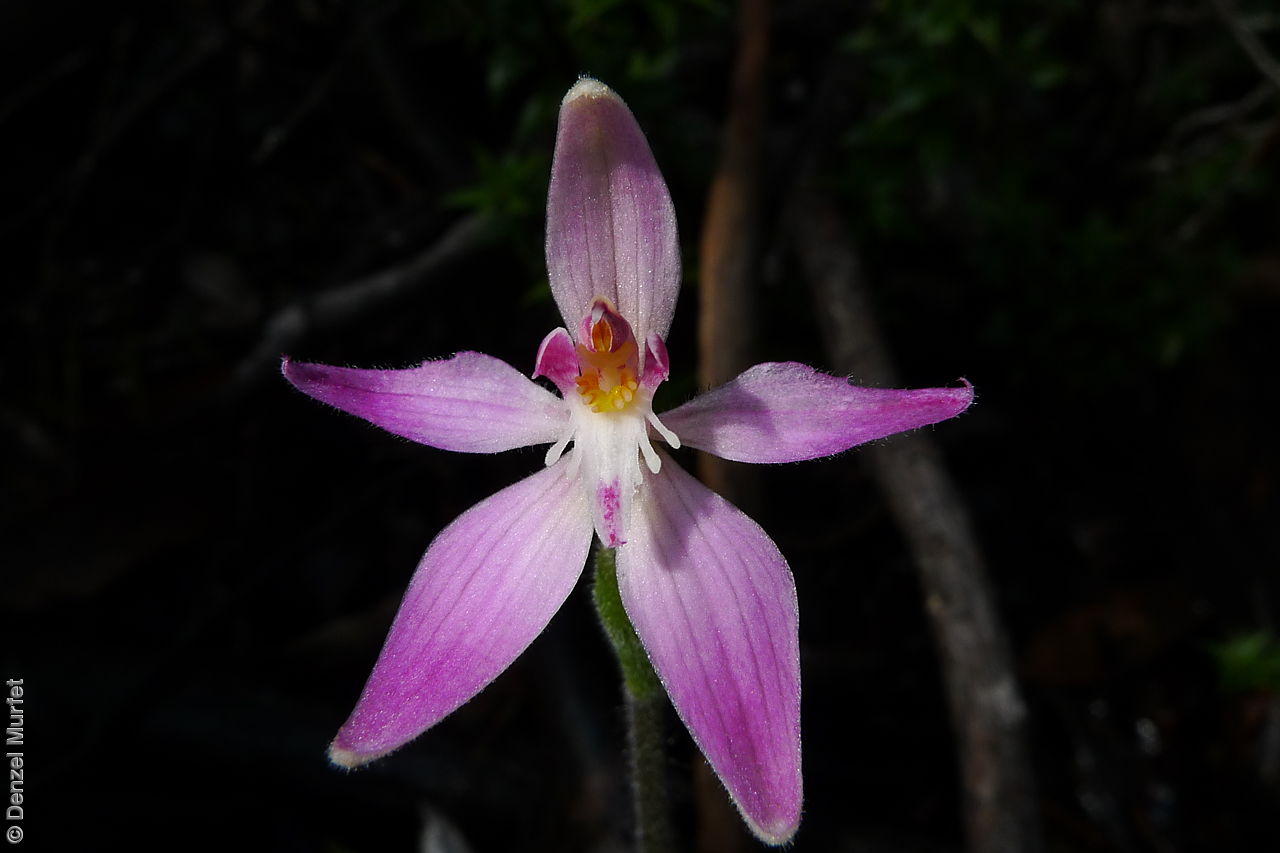
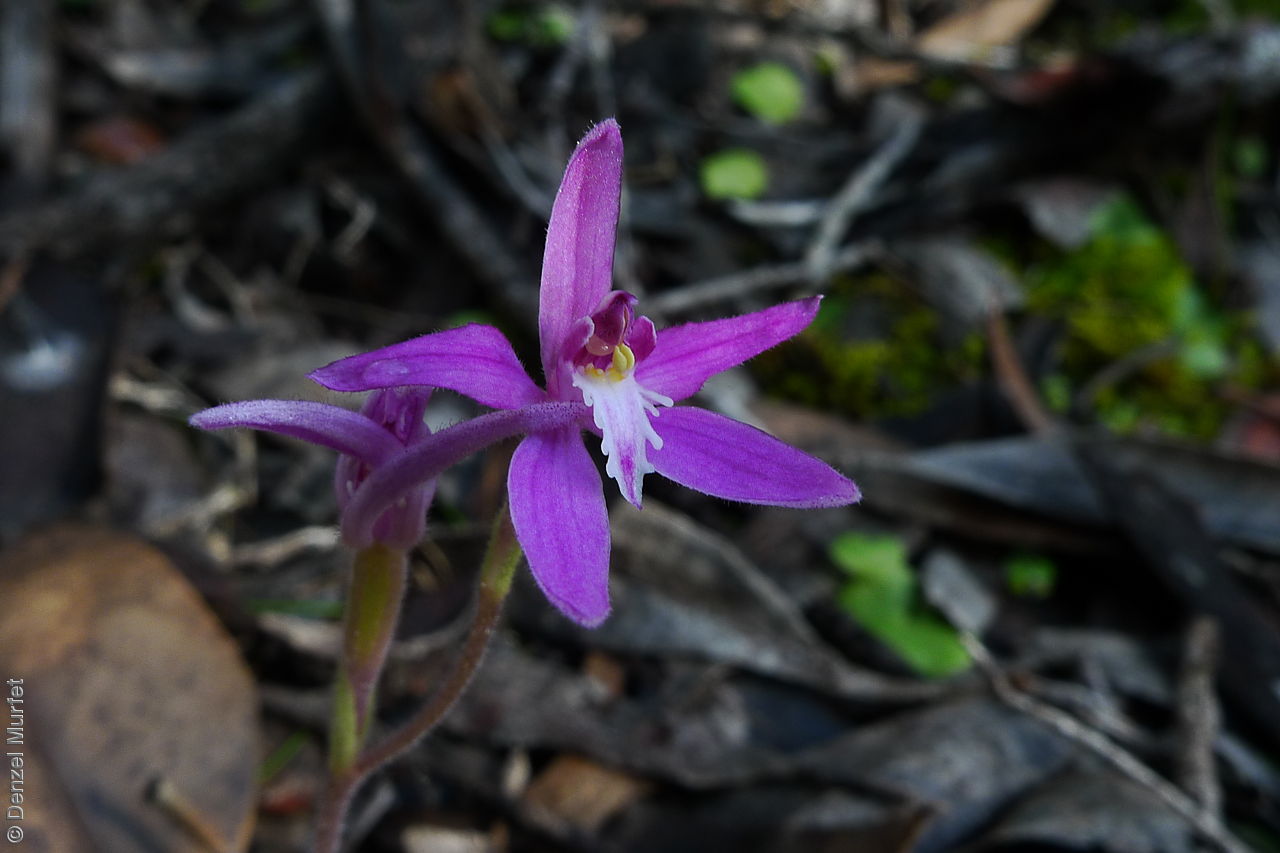
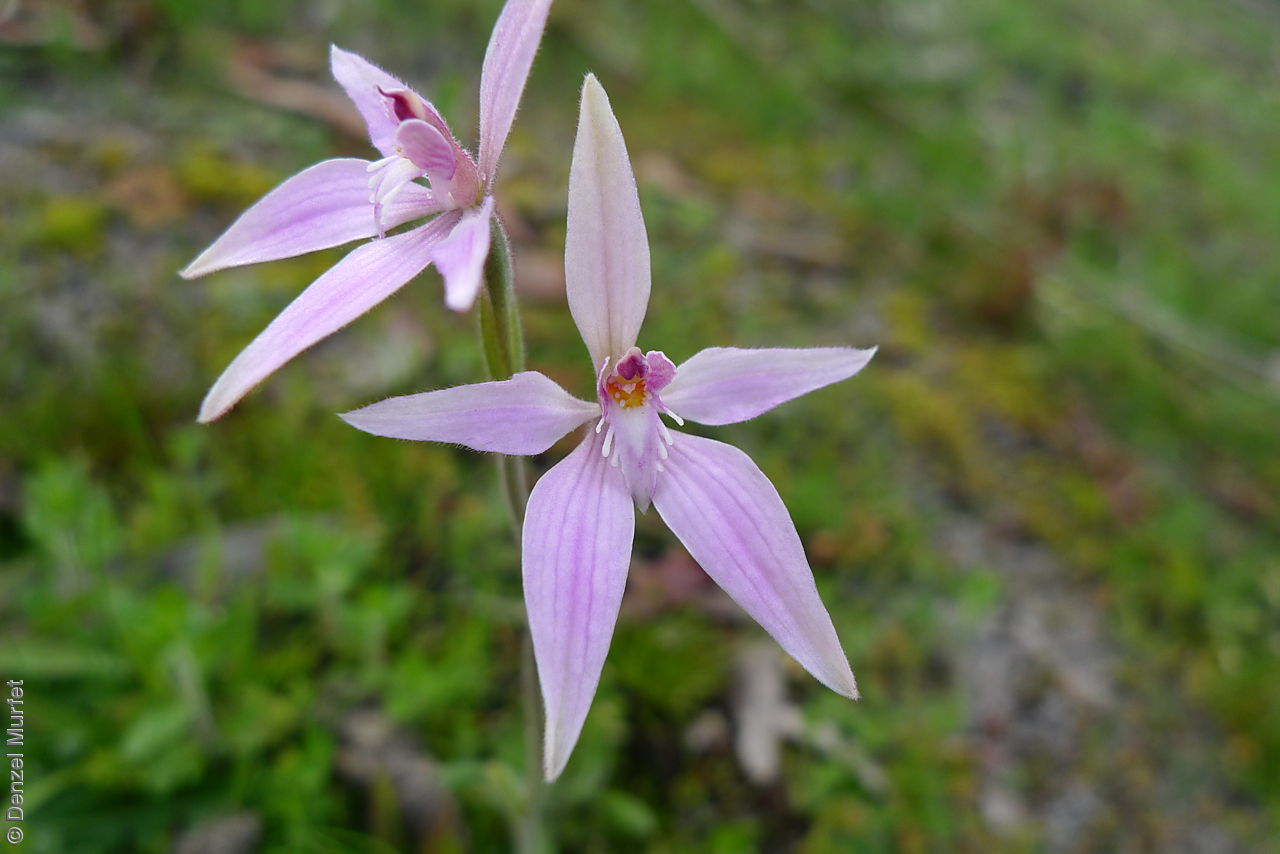
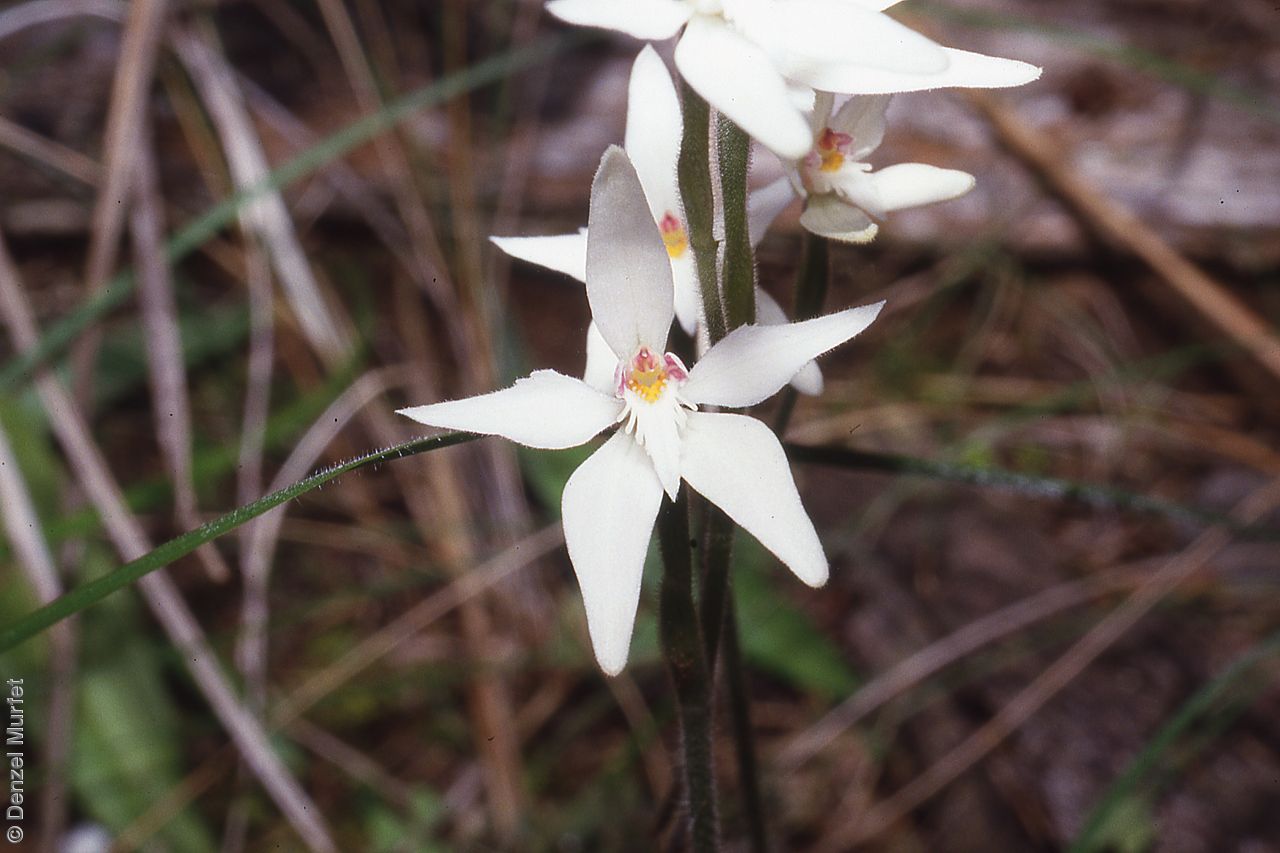
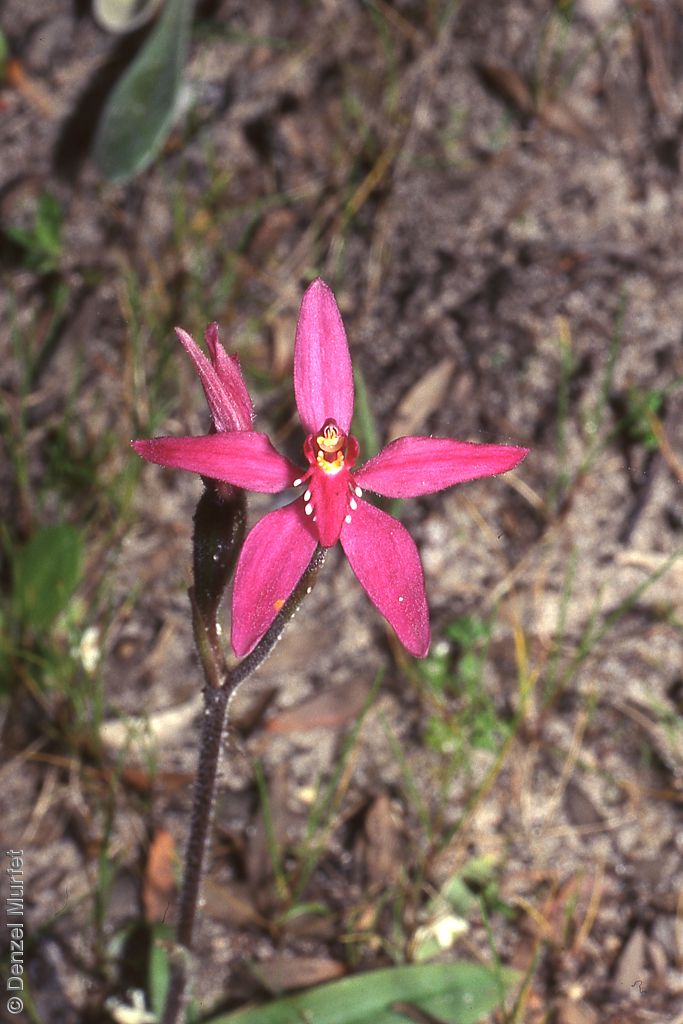
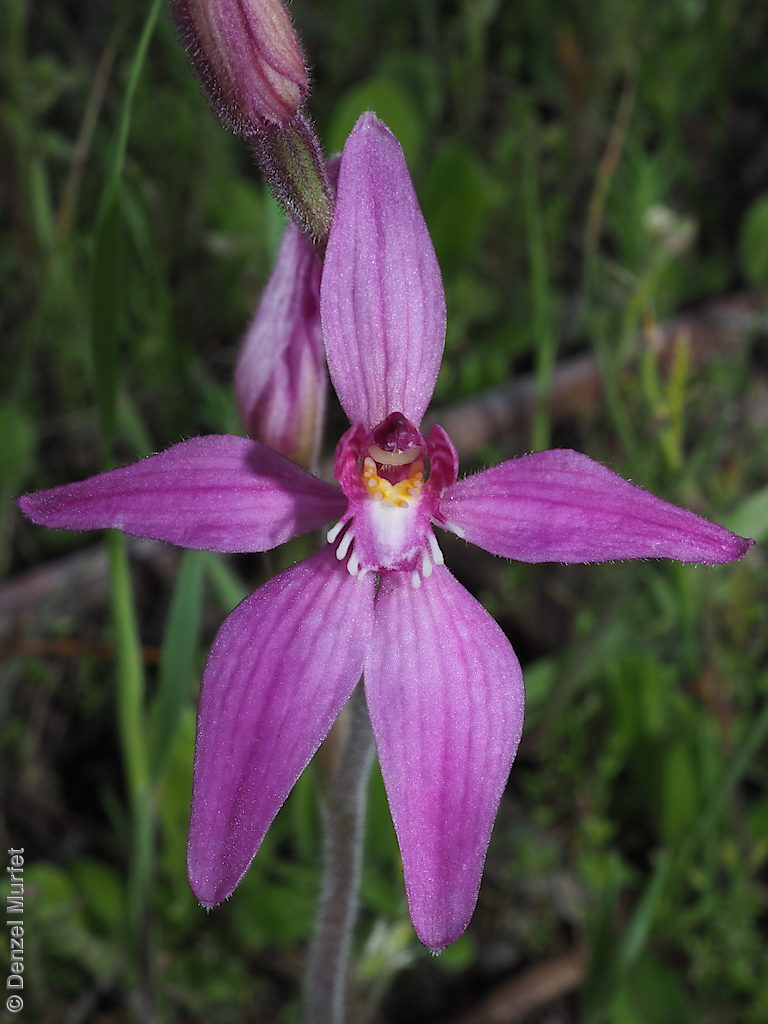
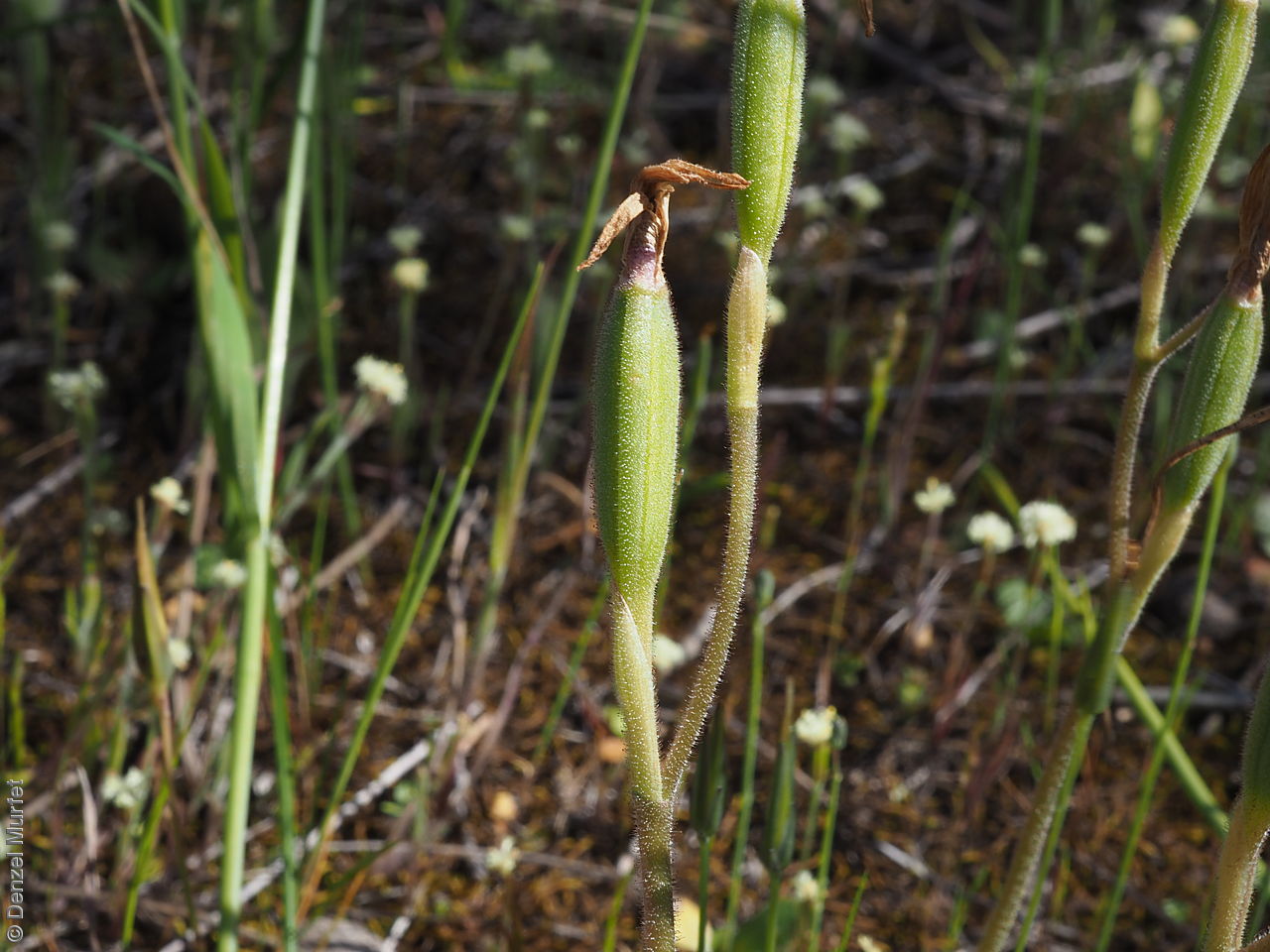
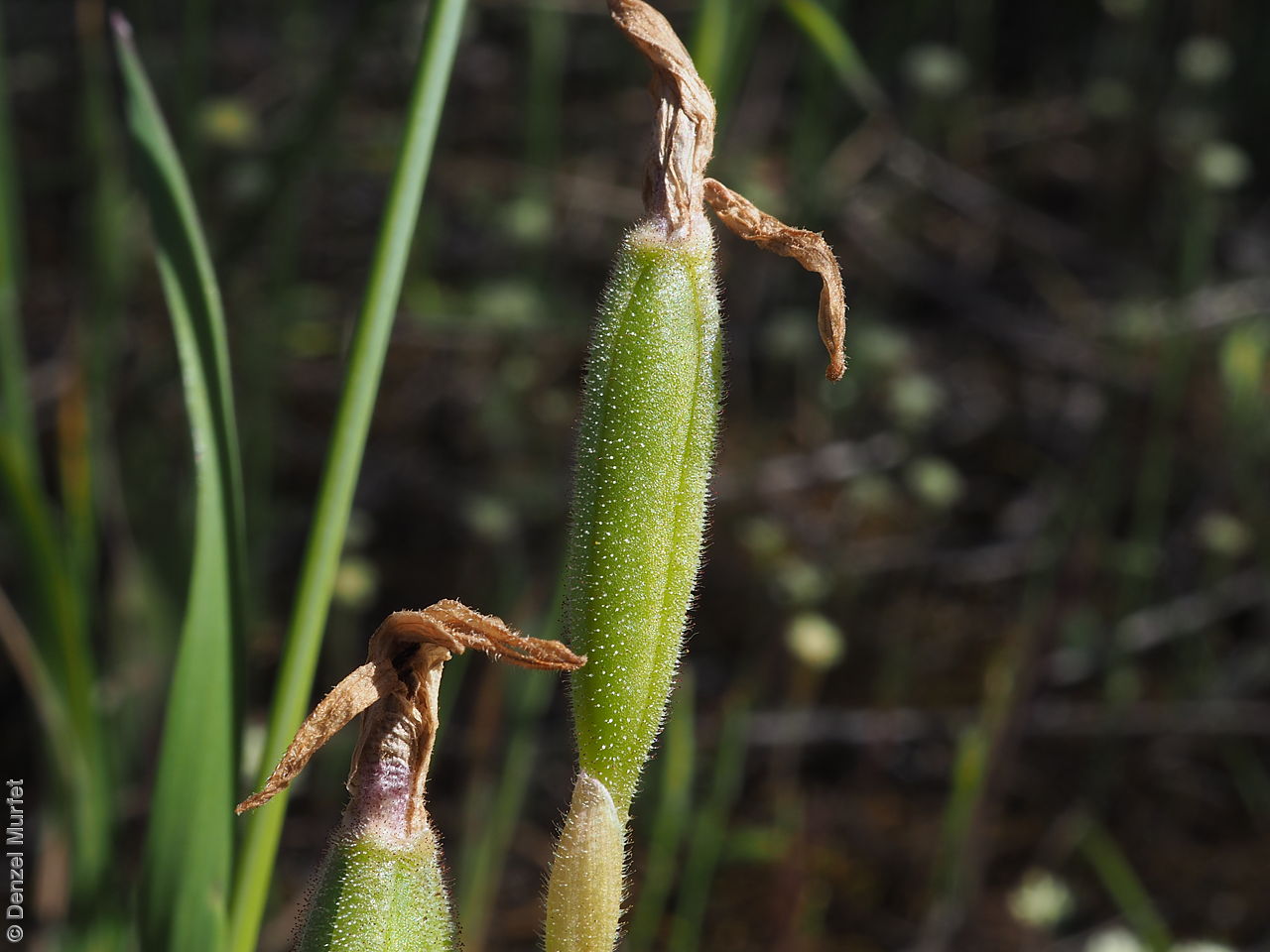
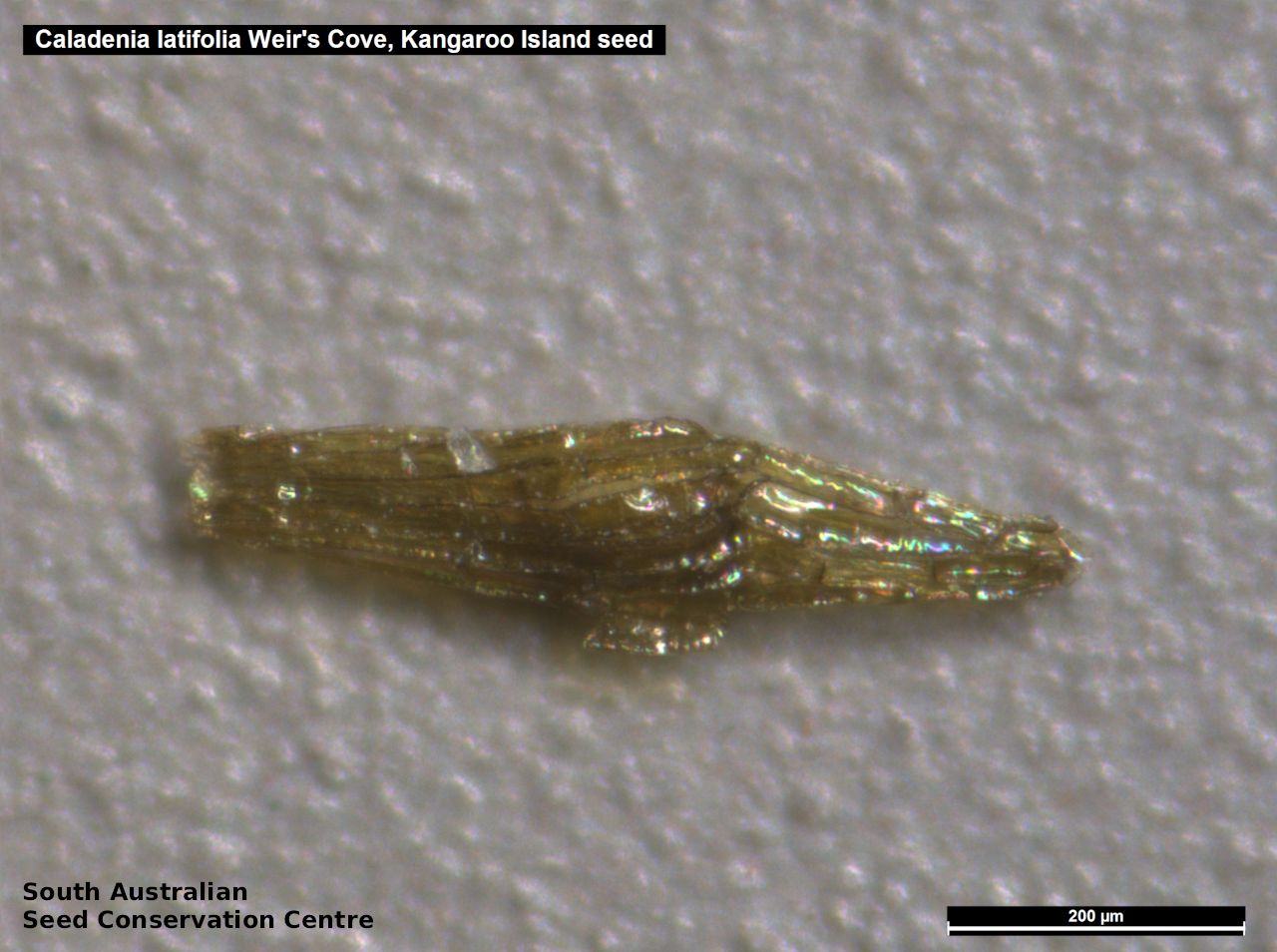



Botanical art
Prior names
Caladenia mollis
Caladenia elongata
Caladenia latifolia var. alba, nom.inval., pro syn., partly
Common names
Pink Fairies
Pink Caladenia
Etymology
Caladenia from the Greek 'callos' meaning beauty and 'aden' meaning a gland, referring to the colourful labellum and the glistening glands at the base of the column that adorn many of the species. Latifolia from the Latin 'latus' meaning broad or wide and 'folium' meaning a leaf, referring to the species broad leaves.
Distribution and status
Found across the southern part of South Australia, from the Eyre Peninsula to the lower South-east, growing on coastal dunes, limestone or less commonly inland on rocky hilltops or creek banks. Also found in Western Australia, New South Wales, Victoria and Tasmania. Native. Common in South Australia. Rare in New South Wales. Common in the other states.
Herbarium regions: Flinders Ranges, Eyre Peninsula, Northern Lofty, Murray, Yorke Peninsula, Southern Lofty, Kangaroo Island, South Eastern, Green Adelaide
NRM regions: Adelaide and Mount Lofty Ranges, Eyre Peninsula, Kangaroo Island, Northern and Yorke, South Australian Arid Lands, South Australian Murray-Darling Basin, South East
AVH map: SA distribution map (external link)
Plant description
Annual terrestrial orchid to 40 cm tall often forming dense colonies by vegetative increase, with a single very hairy, oblong-lanceolate leaf to 10 cm long and 2 cm wide, usually lies flat on the ground, and 1-4, bright pink, rarely white flowers. The back surface of the sepals and petals is a covered with glandular hairs and is a lighter shade of pink. The dorsal sepal is erect, oblong to lance-shaped, petals sometimes with a few irregular teeth on the sides. The Labellum is pink or white with three distinct lobes with the lateral lobes being pink with dark stripes and the mid-lobe being white with a pinkish tip. The centre of the labellum has two rows of yellowish calli with white tips forming a semi-circle. Flowering between September and December. Fruits are brown, hairy, papery ellipsoid capsule. Seeds are very small brown ellipsoid seed with a long cylindrical translucent brown mesh-like covering.
Seed collection and propagation
Collect seeds between November and January. Collect fat capsules as they start to dry and turn brown. Pods will split and release the seeds quickly and will require monitoring. To increase the chances of collecting mature pods, it is recommended that a small breathable bag (ie. Organza bags) be used to enclose the developing capsules. Place the capsules in a container that will hold fine seeds and leave to dry for a few weeks or until the capsule split. Then carefully hold the capsule and tap it gently to release the seeds. Store the seeds with a desiccant such as dried silica beads or dry rice, in an air tight container in a cool and dry place, refrigerator or in liquid nitrogen. For the NVC South East Orchid Project seed was collected from one population in the Bangham area. Approximately 190,000 seeds (0.14 g) were banked. Seed viability was 99%. Seed germination in Caladenia species is difficult without compatible mycorrhizal fungi.
| Location | No. of seeds (weight grams) | Number of plants | Date collected | Collection number Collection location | Date stored | % Viability | Storage temperature |
|---|---|---|---|---|---|---|---|
| BGA | 190,000 (0.143 g) | 10+ | 20-Sep-2013 | KHB744 South Eastern | 1-Nov-2016 | 99% | -80°C |
| BGA | 47,000 (0.017 g) | 3-Oct-2014 | OVE3073 Kangaroo Island | 1-Nov-2016 | 45% | -80°C | |
| BGA | 36,000 (0.013 g) | 9-Oct-2014 | OVE3059 Kangaroo Island | 1-Nov-2016 | 50% | -80°C | |
| 475 | 1-Nov-2017 | N/C | -80°C | ||||
| BGA | 808,000 (0.28 g) | 20+ | 3-Oct-2018 | JRG694 Yorke Peninsula | 24-Apr-2019 | N/C | -18°C, -80°C |
| BGA | 912,000 (0.325 g) | 12 | 28-Oct-2022 | Kildare College Southern Lofty | 21-Jun-2023 | N/C | -18°C, -80°C |
Number of plants: This is the number of plants from which the seeds were collected.
Collection location: The Herbarium of South Australia's region name.
% Viability: Percentage of filled healthy seeds determined by a cut test or x-ray.